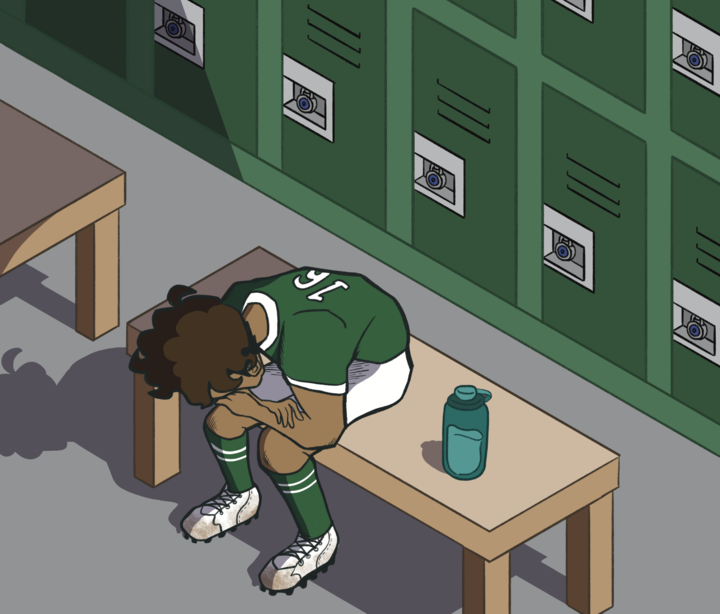W
hen junior Polina Van Hulsen made the decision to play multiple sports during her childhood, she never anticipated just how much it would impact her day-to-day life as a high school athlete.
When she isn’t busy studying for classes, Van Hulsen is sprinting across a soccer field or maneuvering across the lacrosse pitch.
Despite the valuable experiences sports has given her, Van Hulsen has also faced the growing challenges of balancing both her academic schedule and the increasing demand that comes from participating in multiple sports.
As a varsity soccer player, Van Hulsen’s current practice schedule requires her to wake up early in the morning, up to two hours before school starts, in order to attend practice.
“Having to balance that school and student-athlete lifestyle is difficult,” Van Hulsen said. “Generally, it’s tough to manage, but if you have a good (time management) system, it works out.”
According to a 2023 study from the National Institute of Health, 91% of high school athletes experience stress from participating in sports. The study also cites the primary challenges facing student athletes as time management, physical and mental fatigue and academic pressure. For students involved in multiple sports, the stress can compound.
Sophomore Luke Lew, who participates in both varsity golf and junior varsity cross country, said it is often difficult to maintain consistency in his commitment to each sport mainly because he has to choose between prioritizing one sport over the other with his limited time.
To remedy this issue, Athletic Director Jennifer Crane said if they are willing to plan ahead, student athletes can balance sports and school.
“I think that prep periods are a benefit and a way to support student athletes with alleviating some time to get work done,” Crane said.
Other challenges for multi-sport athletes include overuse injuries, overtraining, burnout and the pressure to compete and succeed in multiple sports.
Despite these challenges, Crane said there are many resources within the athletics department to support the physical and emotional well-being of athletes.
“Our athletic trainer is certified to support student athletes and their long term health, (including) managing and preventing injury,” Crane said.
While it is possible for multi-sport athletes to manage demanding schedules, academic pressure continues to stand as the most formidable challenge, Lew said.
“I’ve had to push back my school work many times, and I would have to go to bed much later on those days,” Lew said.
Freshman Oakley Koegler, a varsity soccer and tennis player, said his day-to-day routine consists of tennis practice immediately after school, followed by another rigorous practice for the varsity soccer team.
“I’ve had to sacrifice a little bit more on my sleep or social life in order to maintain a healthy balance between sports and school,” Koegler said.
But Koegler said participating in multiple sports come with an array of benefits that outweigh most of the associated disadvantages.
“In soccer, I really like the teamwork aspect of it, and with tennis the individuality aspect,” Koegler said. “I (enjoy) the camaraderie with my fellow players and learning to adapt and grow on my own.”
Van Hulsen agrees and said it is essential for students to make relationships with fellow athletes.
“I feel like having (soccer and lacrosse) be a team sport is really good for connecting and making really close friends,” Van Hulsen said. “It’s nice to have two different settings where you can see your friends. Especially with school sports, you have them inside of school.”
And Crane said participating in multiple sports benefits not only to physical well-being but also fosters emotional health.
“To me as a student athlete (the benefit) is the internal reward,” Crane said. “It’s the internal growth I get from being part of a team and playing a sport and achieving a goal with the community that I’m part of. It’s still going to be tiring, but you’re going to find a way to make it work because it’s something that you want to do.”




